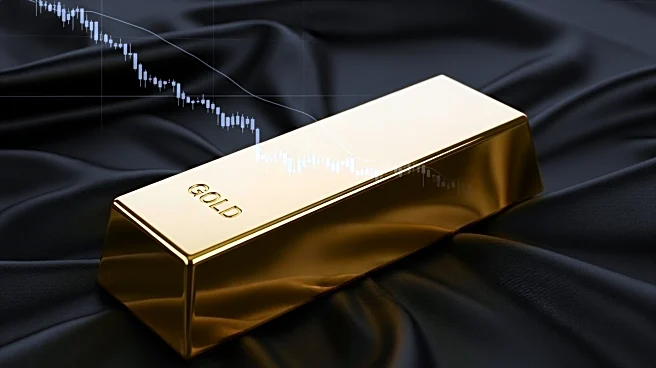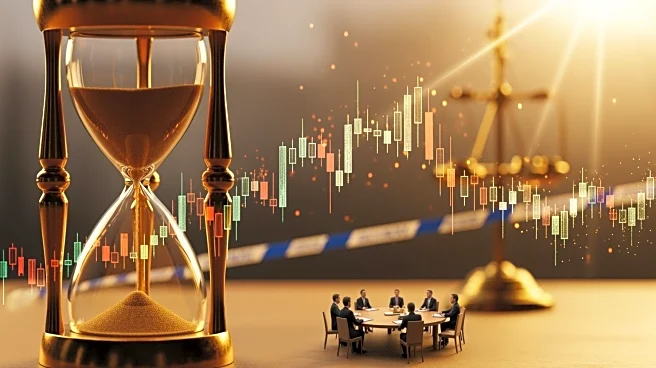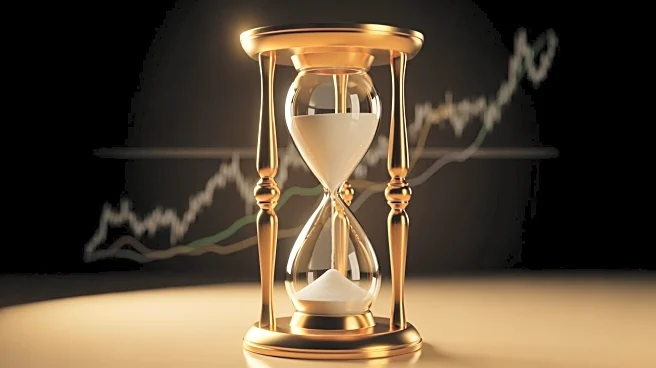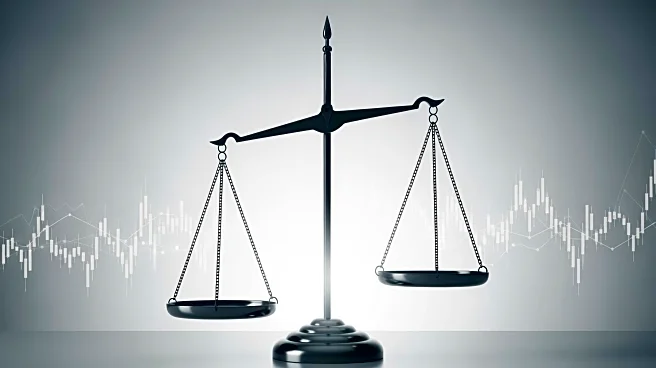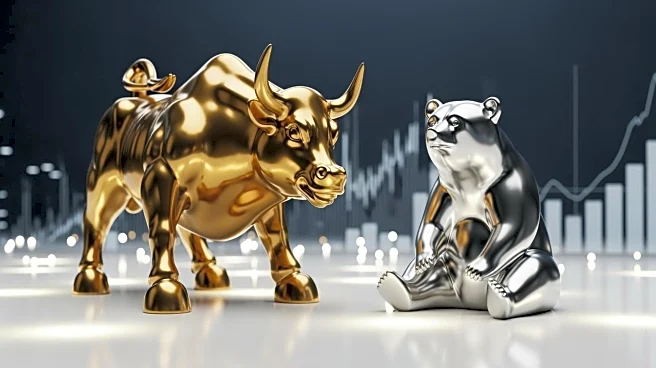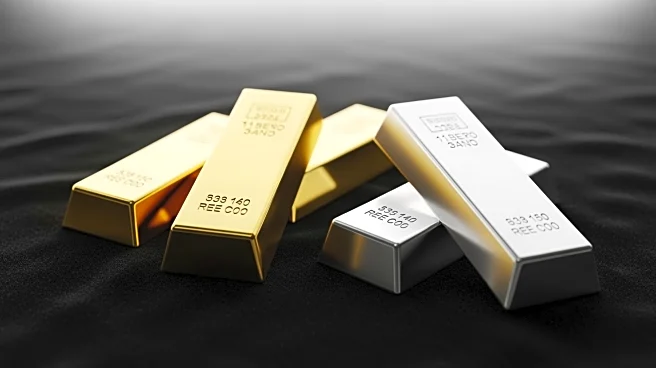What's Happening?
The recent surge in gold prices has sparked a modern-day gold rush, with prices reaching an all-time high of nearly $4,400 per ounce. This increase is attributed to several factors, including geopolitical tensions, economic uncertainty, and a weakened
U.S. dollar. Colorado Springs economist Tatiana Bailey notes that these conditions have led investors to seek gold as a hedge against economic instability. The Hallenbeck Coin Gallery in Colorado Springs has seen a significant increase in business, with customers eager to buy and sell gold and other precious metals. The demand for gold is driven by both individual investors and central banks, who are purchasing large quantities to protect their assets.
Why It's Important?
The rising gold prices reflect broader economic concerns, including inflation and trade tensions, which are eroding confidence in the U.S. dollar. As a result, gold is becoming a preferred investment for those seeking to mitigate risk. This trend has significant implications for the U.S. economy, as it suggests a lack of confidence in traditional financial markets and the dollar's stability. Investors who have diversified into gold may benefit if economic conditions worsen, while those who remain reliant on the dollar could face losses. The situation underscores the importance of understanding global economic dynamics and their impact on investment strategies.
What's Next?
The future of gold prices will depend on various factors, including the Federal Reserve's monetary policy and global economic conditions. If interest rates remain low, the dollar may continue to weaken, further driving demand for gold. Additionally, geopolitical developments and trade policies could influence investor behavior. As the situation evolves, stakeholders, including policymakers and investors, will need to monitor these factors closely to make informed decisions. The ongoing demand for gold suggests that prices may remain high in the near term, but market volatility could lead to fluctuations.
Beyond the Headlines
The current gold rush highlights the complex interplay between economic policy, investor sentiment, and market dynamics. It raises questions about the long-term sustainability of relying on precious metals as a financial hedge. Additionally, the environmental and ethical implications of increased mining activity warrant consideration, as they could impact regulatory policies and industry practices. The situation also reflects broader societal concerns about economic inequality and access to financial resources, as not all individuals have the means to invest in gold.


